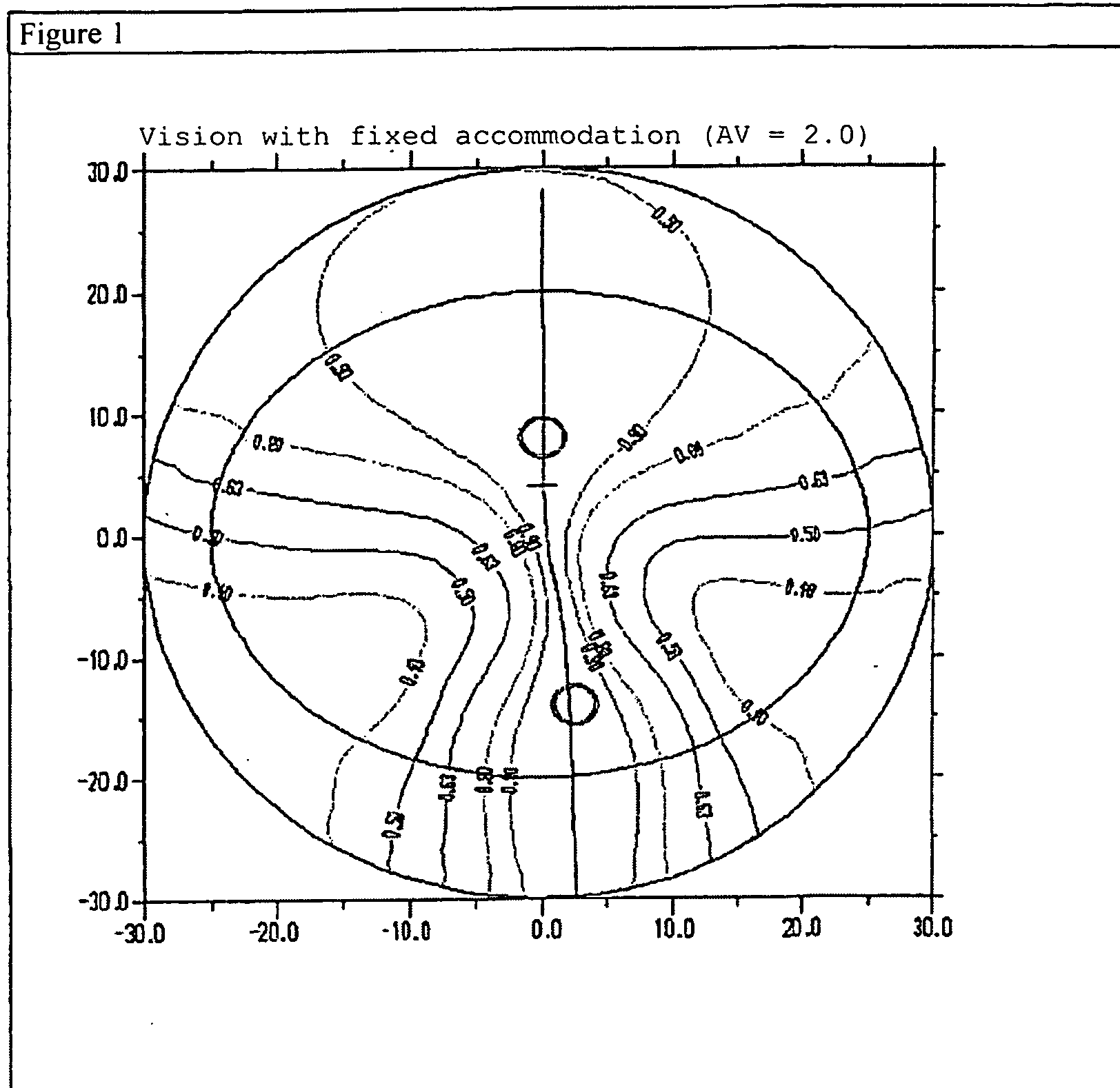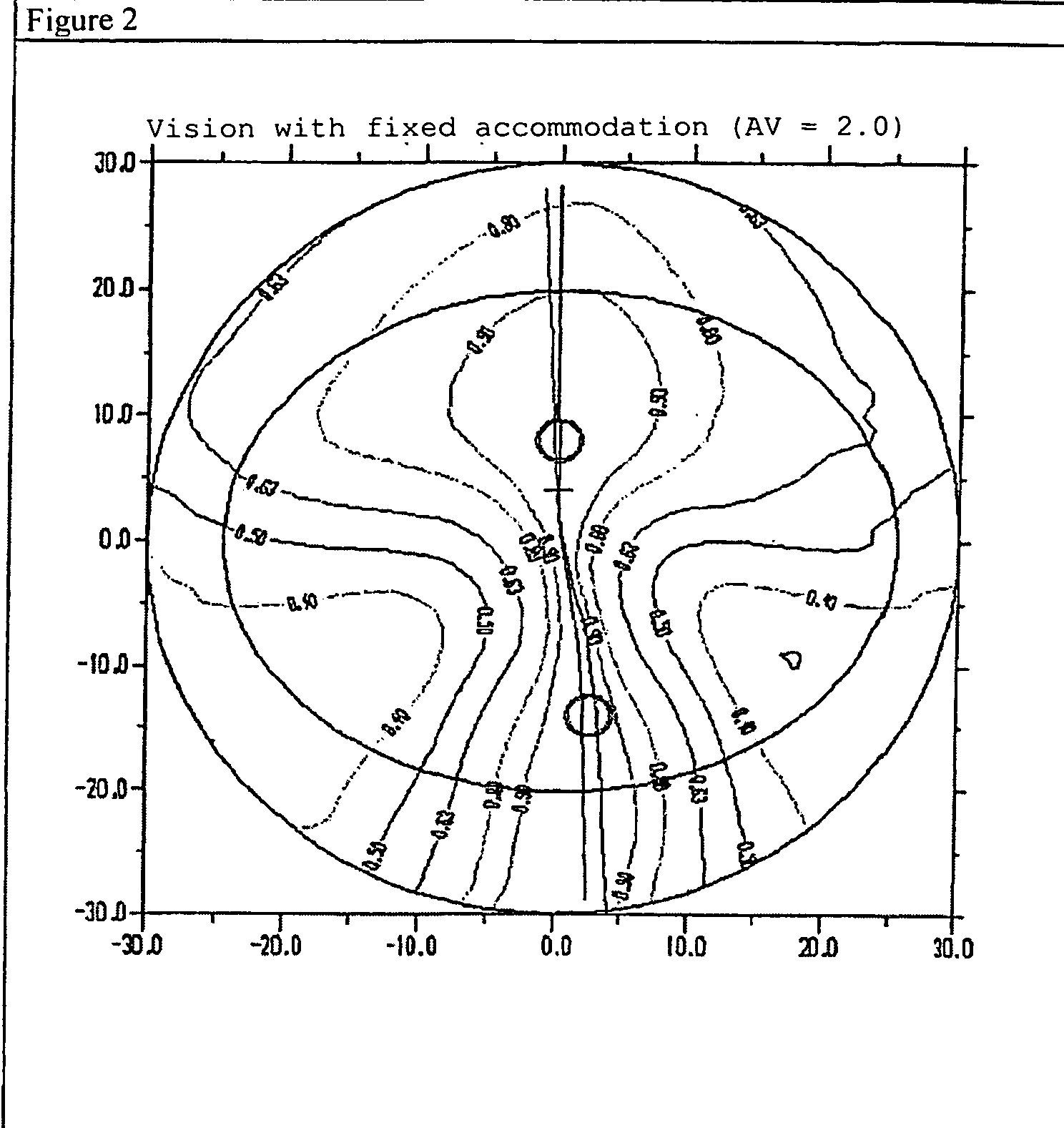Method for calculating an individual progressive lens
- Summary
- Abstract
- Description
- Claims
- Application Information
AI Technical Summary
Benefits of technology
Problems solved by technology
Method used
Image
Examples
Example
DETAILED DESCRIPTION OF THE DRAWINGS
[0075] The following standard values were used in FIG. 1:
[0076] Prescribed sphere=−4.0 dpt; addition 2.0 dpt; prescribed cylinder=0 dpt; prism vertically and horizontally=0 cm / m;
[0077] Effect in the reference points in the use position; interpupillary distance=63 mm; corneal vertex distance=15 mm; ocular pivot point distance=28.5 mm; anterior tilt=8 degrees; frame lens angle (lateral tilt)=0 degrees; center thickness=2 mm; diameter=70 mm; thickness reduction prism=1.0 cm / m; material=Perfalit 1.6 n=1.597; far object distance=0 dpt; near object distance=−1000 / 380 mm; basic curve sph=3.41 dpt. FIG. 1 shows that the isolines are completely symmetrical with the principal line, and also that there is a uniform and soft transition at all points and there are large far and near vision areas. A lens having different individual parameters should also look like this.
[0078] The following individual parameters are specified in FIG. 2:
[0079] Prescribed sph...
PUM
 Login to View More
Login to View More Abstract
Description
Claims
Application Information
 Login to View More
Login to View More - R&D
- Intellectual Property
- Life Sciences
- Materials
- Tech Scout
- Unparalleled Data Quality
- Higher Quality Content
- 60% Fewer Hallucinations
Browse by: Latest US Patents, China's latest patents, Technical Efficacy Thesaurus, Application Domain, Technology Topic, Popular Technical Reports.
© 2025 PatSnap. All rights reserved.Legal|Privacy policy|Modern Slavery Act Transparency Statement|Sitemap|About US| Contact US: help@patsnap.com



